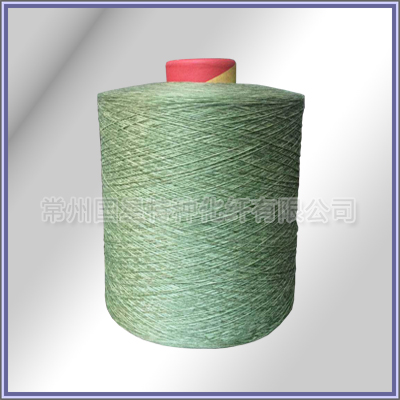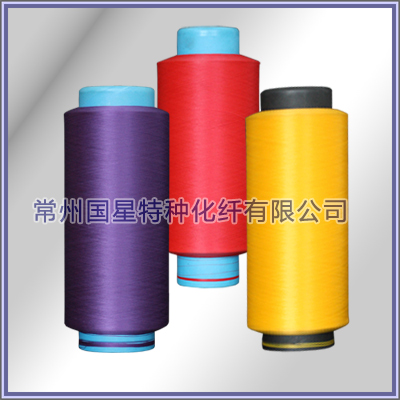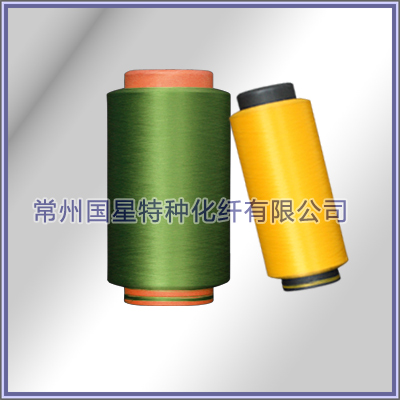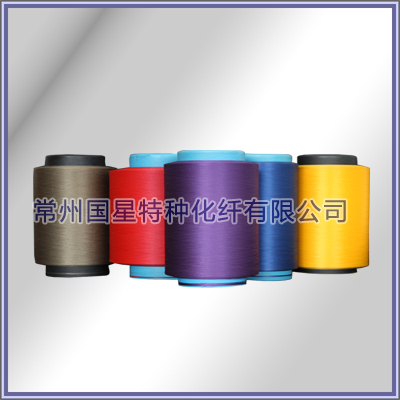Challenges and Opportunities for the Clothing Industry
Consumer clothing spending is compressed, shoppers looking for the need to tailor the goods, price pressure, rising production costs, these factors add up to these years become the apparel industry and its supply chain pressure years. Stalls network through finishing some of the world's clothing industry big brother's view, I hope to give you some reference:
VF Corp (US company, including Lee, The North Face, Timberland, etc.) General Manager, Asia Supply Chain Mr. Colin Browne:
The strength of the dollar and the volatility of commodity costs will keep us vigilant. Retail shape is also changing, online shopping into the mainstream, let us rethink the product sales path and the speed of listing. At the same time, in order to take advantage of the subsequent trade agreements, such as the African Growth and Opportunity Act (AGOA), the Trans-Pacific Partnership Agreement (TPP) and so on, product procurement has shifted to new sources. These changes will define the next five years the type of garment industry. To ensure that the safety of garment factories in the world's developing countries will continue to be the focus. The geopolitical risks are increasing as these industry changes take place, which will make our role more challenging.
Esquel Group (Hong Kong cotton shirt manufacturer, customers include Brooks Brother, Lacoste, Nike, Ralph Lauren, etc.) Vice Chairman Mr. KL LEE:
The garment industry economic outlook will integrate all key markets. Can be expected to fluctuate in the exchange rate market, because the US Federal Reserve began to take a tightening policy; coupled with the evolution of consumer shopping behavior to e-commerce platform. The world's brands, retailers and manufacturers must adapt, the success will be those who come up with "win formula" practitioners.
Li & Fung (Hong Kong Li & Fung Group) Purchasing President Mr. Marc Compagnon:
From the industry point of view, hear the collapse, but this does not mean that the entire system of fracture, but to provide a huge opportunity. Today's consumers can get real price transparency, so the formula for commodity value has changed. The beginning of the profits have no meaning, each brand are sold at half price, get now consumers only wait until the discount to buy. To do this line have to think in this type of discount to survive. Many experts mentioned the full range of channel sales or O2O (to online business driven offline sales), but the end is still the product. You have to sell the products that consumers want. What is the product that consumers want? Can not be promptly sent to the hands of consumers? This is the success or failure of the enterprise. So in our line you have to understand how to create a supply chain that can meet the needs of the market. And these markets need to change often, whether it is the twenty-first century, baby boomers or active silver-haired nomads, in product segmentation and distribution channels, what is the difference? People always ignore the fact that the world trade is still growing at a rate of 2-3% per year. Even if the current environment is difficult, the end of the tunnel is always bright.
Bureau Veritas Vice President, Strategy Development, Mr. Rick Horwitch:
After the US election may be the biggest challenge facing the garment industry, in addition, challenges and opportunities can be summarized as follows: supply and demand - last year I mentioned the speed is the key to challenges and opportunities, I did not change the point of view, in fact, Speed is still the industry to face the biggest challenges and opportunities. The traditional way of doing business is based on the "supply-demand" model, but we are now living in a "demand-supply" world. Customers need to meet their personal specifications of the product, and now it is necessary. Products tailored to the requirements are no longer available only by niche companies. This is a long business model, the process needs to be changed in a collaborative manner. The shift to the "demand-supply" model requires a commitment from top to bottom to innovate and change. The problem is that change is neither simple nor cheap. However, we have seen countless companies embrace and advocate change, and in improving product speed, revenue and profit growth to achieve great results, while strengthening customer loyalty and retention. Smart Products - I strongly recommend visiting Las Vegas or Shanghai's Consumer Electronics Show (CES). This exhibition is no longer just TV, camera and audio-visual device. More than one-third of the booths in 2015 are about smart products (only about 5% in 2014) and the next percentage will be greater. The display comes from the car to the robot (sewing machine), the 3D printer (from the toy to the clothes), and the various shapes, types, and materials.
If you want to see what the real consumer product looks like, it's a must-see exhibition. Opportunities exist in the fiber, yarn, fabric material within the combination of technology to develop very cool and transformative products.
The challenge will be: purchasing and manufacturing - can the product be done? Quality - Is the product useful? Is there any safety study of legislation and biometrics?
Hong Kong Textile and Garment R & D Center (HKRITA) Chief Executive Mr. Edwin Keh:
The biggest challenge this year is still environmental sustainability, social responsibility, supply chain raw materials and labor costs, as well as complex all-round channels and turbulent global markets. Consumers and related groups have already made it clear that the goods are from responsible, transparent and environmentally friendly suppliers, but these problems are complex and the thresholds are increasing rapidly. The solution of the last mile, the speed of the supply chain, the demand forecast, etc. will continue to be the most interesting focus for many companies.
Opportunities fall mostly in the new intelligent clothing system, sustainable business model, intelligent production and other fields. Smart clothing system refers to the wear of solutions and integrated functional clothing, not only allows us to keep warm, dry and comfortable, but also to protect our safety, to monitor our health, let us maintain the network connection and take the initiative to adapt to our changing surroundings. Only ten years ago, our request for the watch is the time, the phone is used to contact with the outside world, so the next few years we will expect clothing and shoes to provide a variety of everyday life wear function. Clothing industry will become more intelligent, high-tech, from other industries to learn the essence. Clothing will become a knowledge-based industry based on design and technology.
President of the American Apparel and Footwear Association (AAFA) Mr. Rick Helfenbein:
Developing countries face the turning point of Lewis Turning Point, which means that the supply of manpower is driven by more, driving up wages and slowing growth. These countries are responsible brands that continue to purchase products. Supply of clothing and footwear products in the country, wages and costs of the rally did not break. US consumers after seven years ago, the economic crisis, and now in the clothing footwear has been slow down the pace of spending, but still the pursuit of high-priced items such as cars. The same consumer is very interested in wearing a product at a discount, just need to attract him into the store. So what we see now is that the 2008 cold spell has not turned into a big contraction in 2015, still in the visible future. This environment allows the procurement expert's task to only plan the strategy of optimizing individual supply chains.
Olah Inc (headquartered in New York, sales of denim and casual wear and marketing consulting services) General Manager Mr.Robert Antoshak:
Demographic changes, economic inequality and sluggish market demand in developed countries are some of the major challenges in 2016. The number of consumers in many countries is increasing, and older consumers buy clothes less often than younger consumers, especially in developed countries. Rich and poor inequality in the overall demand for clothing is a central factor, will affect all consumers shopping decisions.
After the recession in 2008, the inequality between the rich and the poor has become increasingly apparent, consumers at the top of the wealth pyramid continue to buy clothes at the normal frequency, at the bottom of the consumer is struggling. This polarization causes the overall sales downturn. In addition, the overall population growth situation in determining the overall clothing retail performance is also an increasingly important factor. Growing population usually represents higher clothing sales, but in developed countries, population growth problems. US, Europe and Japan, the slowdown in population growth, clothing sales may decline or at least stagnant, but in developing countries is another matter. A large part of the world's population is concentrated in mainland China and India, and the population of these two countries continues to increase, and the importance of population growth is of new significance.
McKinsey & Company Partner and McKinsey & Company Leader in Clothing, Fashion & Luxury Group Mr. Dr Achim Berg:
Macroeconomic development and consumer and channel trends led to fluctuations in the apparel market is the biggest challenge last year. There is a considerable number of industry is still suffering from too much inventory, physical store performance and exchange rate changes in the poor. Competitive trend is fierce, need to improve the speed of clothing practitioners and consumer experience, while the resistance to increase the pressure on profits.
Kurt Salmon Senior Manager, Garment Consultants Mr. Stephen Taylor:
These years for most clothing retailers will not be jumping for a year. In the case of macroeconomic instability, interest rates may rise, consumer spending is still squeezed. But the phenomenon of consumers to online shopping clothing in the annual meeting intensified, the role of the retail store has a real impact. Has established a full range of channel capabilities, and has begun to store the brand and product image of the brand is expected to profit. It is most likely to suffer from investing in this area and still relying on traditional wholesale routes.
The establishment and maintenance of sustainable and moral sources of supply will be the most priority. This will be done with all brands, not just discounts with mass market retailers. So some clothing brands will need to build their own internal procurement capabilities, closer to their supply chain upstream industry.
International Garment Alliance (IAF) Secretary General Mr. Matthijs Crietee:
A huge opportunity for this industry is still on the path of "improving production" rather than "shifting production". Last year, practitioners could prove that investing in the factories and the supply chain would create lasting progress in terms of sustainability, productivity, labor and money savings.
Fabrics and clothing in the functional aspects of exciting innovation, with the potential to improve the image of clothing. More comfortable and more environmentally friendly intelligent wear device and fabric can create a new sense of value for consumers. Innovation can be used as a long-term discount with sweatshop antidote.
Industry's biggest challenge is how to improve the potential of technology and organization into reality, into the supply chain. First-line factories or factory groups are practicing such transformations; for second-tier manufacturers, investing in improvements, such as productivity or environmental protection, is more difficult to implement because they face more financial, time and knowledge constraints.
Coats Group (UK suture and pull manufacturing and sales company) CEO Mr. Paul Forman:
Speed and productivity are key aspects. The biggest challenge is the price pressure coupled with the expansion of production costs, and how to completely deal with such shocks. Our industry is most concerned about the speed, so improving supply chain efficiency will help to ease the impact, but the increase in labor and raw material costs, coupled with the downward pressure on retail prices is a continuing challenge. Regardless of long and short forecasts can not ignore the Chinese mainland.
China's economic growth and endless consumer demand seem impossible to maintain the pace and level of the past, but it is still the world's second largest economy, representing the huge business opportunities in the garment industry, and have not yet entered the market operators probably already Missed the time. The Transpacific Partnership (TPP), after seven years of consultation, has become its benchmark year 2015. Although the completion of the TPP Agreement requires a lengthy approval process, we should begin to look at the growth drivers of signatories like Vietnam, which will benefit from free trade and competition liberalization.
Ms. Julia Hughes, President, American Fashion Industry Association (USFIA)
Talk about the opportunity. Obviously the new trade agreement for the garment industry to bring some huge opportunities. If you look at the data, clothing brands and retailers are usually not serious users of free trade agreements, whether in the United States or other countries. According to the latest US Customs and Border Protection, only 19% of US imports of textiles and clothing are tax-free for compliance with free trade agreements or unilateral trade preferences. While the import tariffs on some apparel products are among the highest in US tax rates, US brands and retailers are using very low rates in most US trade agreements.
Participate in the USFIA2015 year of the Year of the Year of the Year of the Year, which is at 30% or less. But we hope that some new agreements, such as the TPP, the EU-Vietnam Free Trade Agreement, that would otherwise be the source countries, would encourage some companies to re-view the benefits of free trade. TPP does not reflect the fact of the global value chain, but does not reflect the tariffs on the first day, and the exception to the purchase of raw materials from non-TPP countries in accordance with the supply shortfall , Which means that the TPP agreement still has a substantial procurement opportunities. For example, dress and skirt in the TPP agreement will be effective in tariffs, and some of the list of supply shortages on the list of fabrics is used to make dress and skirt.
The key to success lies in whether companies can spend time and resources to learn how to take advantage of TPP business opportunities. Come back to the challenge. Last year we mentioned trade protectionism, which is still a challenge to see if TPP is out of line with the rules of origin and tax cuts. Moral procurement is also a top priority because companies are committed to ensuring that their sources of supply are not only compliant but also ethical. This is a bigger challenge when everything is rising (raw materials, labor, freight and circulation costs).
Another concern is related to supply chain and cargo security. From labor struggles and natural disasters, it is possible to suspend production operations, and the risk of terrorism (and the necessary response measures) will impact freight and circulation, and businesses must be vigilant. Today, the supply chain must meet the requirements, in line with the moral, security, of course, is to the appropriate price to provide consumers with the appropriate product!
British clothing industry consultants Clothesource CEO Mr. Mike Flanagan:
The industry is still dominated by six key issues:
Selective impairment in Europe, clothing costs rise, but retail prices fell. In the United States, retail prices fell, but the manufacturer's clothing offer also fell.
Overcapacity in the country, the decline in retail prices makes the situation worse. The next five years, the developed country market, some of the original money to close the retail store situation may be very common. In terms of the number of garments, the Western clothing market is still growing, but the excessive expansion of the past will contain profits.
A survey of 150% of global retailers is losing money in the network, with another one-third

 +86-519-86266888
+86-519-86266888 gxhx888@126.com
gxhx888@126.com



